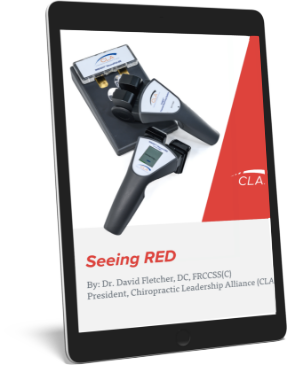The term “mental impulse” was used by D.D. Palmer in his 1910 text. Palmer (1) wrote, “Chiropractors do not treat diseases, they adjust the wrong which creates disease; they have discovered the simple fact that the human body is a sensitive piece of machinery, run throughout all its parts by mental impulse…A mental impulse is an incitement of the mind by Innate or spirit, in the form of an abrupt and vivid suggestion, prompting some unpremeditated action or leading to unforeseen knowledge or insight.”
A popular misconception is that God, Innate Intelligence, and mental impulse are synonyms that may be used interchangeably. Milus (2) stated, “The concept of ‘Innate Intelligence’ is a fundamental component of chiropractic philosophy as developed by D.D. Palmer…B.J. Palmer modified the concept, popularizing a more materialistic notion of Innate that effectively equated it with ‘mental impulses.’”
Yet, B.J. Palmer clearly differentiated Innate Intelligence from mental impulse. According to B.J. Palmer (3), “Mental impulse is that accumulation of immaterial units of intellectual energy which, after having been absorbed, transformed and expelled thru the brain, Innate Intelligence deems of proper quantity and quality to personify specific characteristic functions.” B.J. Palmer (4) clearly stated that, “My Innate Intelligence is not God…”
Describing the nature of the mental impulse has been a formidable challenge to students of chiropractic. Early authors were limited by the basic science knowledge and technology of the time. For example, Stephenson (5) wrote, “We might conceive of this mental impulse as being composed of certain kinds of physical energies, in proper proportions, which will balance other such forces in the Tissue Cell; as electricity, valency, magnetism, cohesion, etc., etc.. Perhaps some of these energies are not known to us in physics. What right have we to assume that we have found them all? The writer presents this as a hypothesis or theory in order to get a working basis…It is no discredit to Chiropractic that it must also use theories concerning the transmission of mental forces.”
Furthermore, Stephenson (6) noted, “The mental impulse is not an energy at all. It is a message. A message is not a material, an energy, or a thing physical in any sense…Mentality makes it and sends it to an object of matter.”
In his last written text, B.J. Palmer (7) articulated the physical manifestation of the mental impulse, which he termed “nerve-force flow.” Although the action potential is one manifestation of the expression of the mental impulse, it seems that the developer had a broader concept in mind: “The brain-nerve-body, body-nerve-brain material system through which flowed an intangible, unseen, abstract, difficult to prove that there was a ‘something’ very powerful, dynamic, without which we would be dead matter. We, who proved existence of this continuity circular circulation call it the mental impulse nerve-force flow. This abstract circulation regulates, controls and directs the flow of arterial and venous blood.”
It is clear that the mental impulse, as described by the Palmers, is not synonymous with Innate Intelligence or the neurochemical action potential. It is a “thought” which may be expressed through a variety of neurobiological mechanisms. These mechanisms include synaptic and non-synaptic processes.
Boone and Dobson (8) described a model of vertebral subluxation which includes interference to action potential and interference to mental impulse. The non-synaptic mechanisms include axoplasmic flow, volume transmission, ephapsis, field effects, and peptide messengers. Future columns will discuss these mechanisms and their postulated relationship to vertebral subluxation.
References
1. Palmer DD: “Textbook of the Science, Art and Philosophy of Chiropractic.” Portland, OR. Portland Printing House Company, 1910. Pages 85 and 109.
2. Milus T: “The state of Innate.” Topics in Clinical Chiropractic 1995;2(2):45.
3. Palmer BJ: “The Science of Chiropractic.” Davenport, IA. The Palmer School of Chiropractic, 1920. Page 28.
4. Ibid. Page 45.
5. Stephenson RW: “Chiropractic Textbook.” Davenport, IA. The Palmer School of Chiropractic, 1948 edition. Pages 268, 269 and 292.
6. Ibid. Page 294.
7. Palmer BJ: “Our Masterpiece.” Davenport, IA. The Palmer School of Chiropractic, 1961. Page 6.
8. Boone WR, Dobson GJ: “A proposed vertebral subluxation model reflecting traditional concepts and recent advances in health and science.” Journal of Vertebral Subluxation Research 1996;1(1):19.

























































































































































